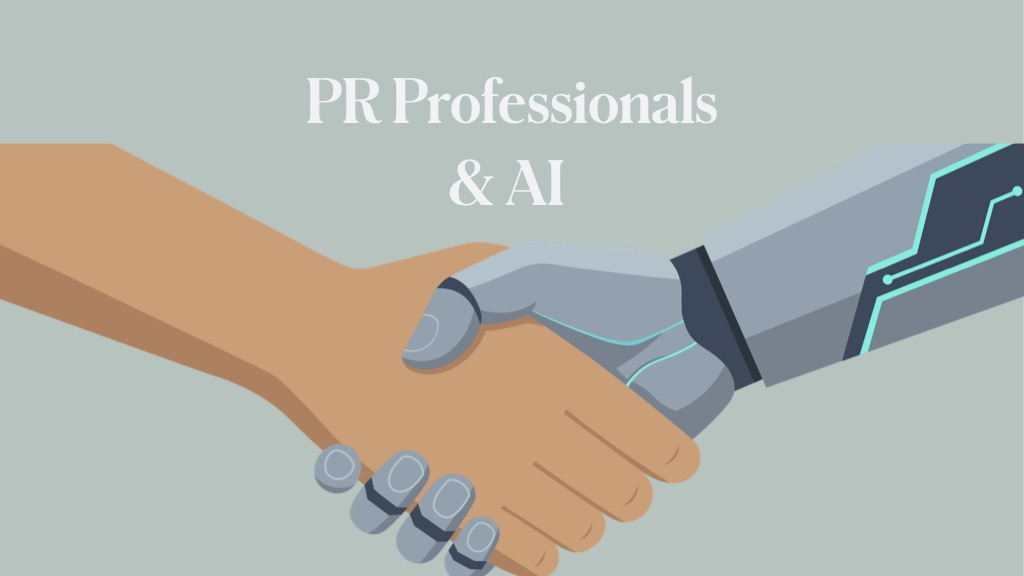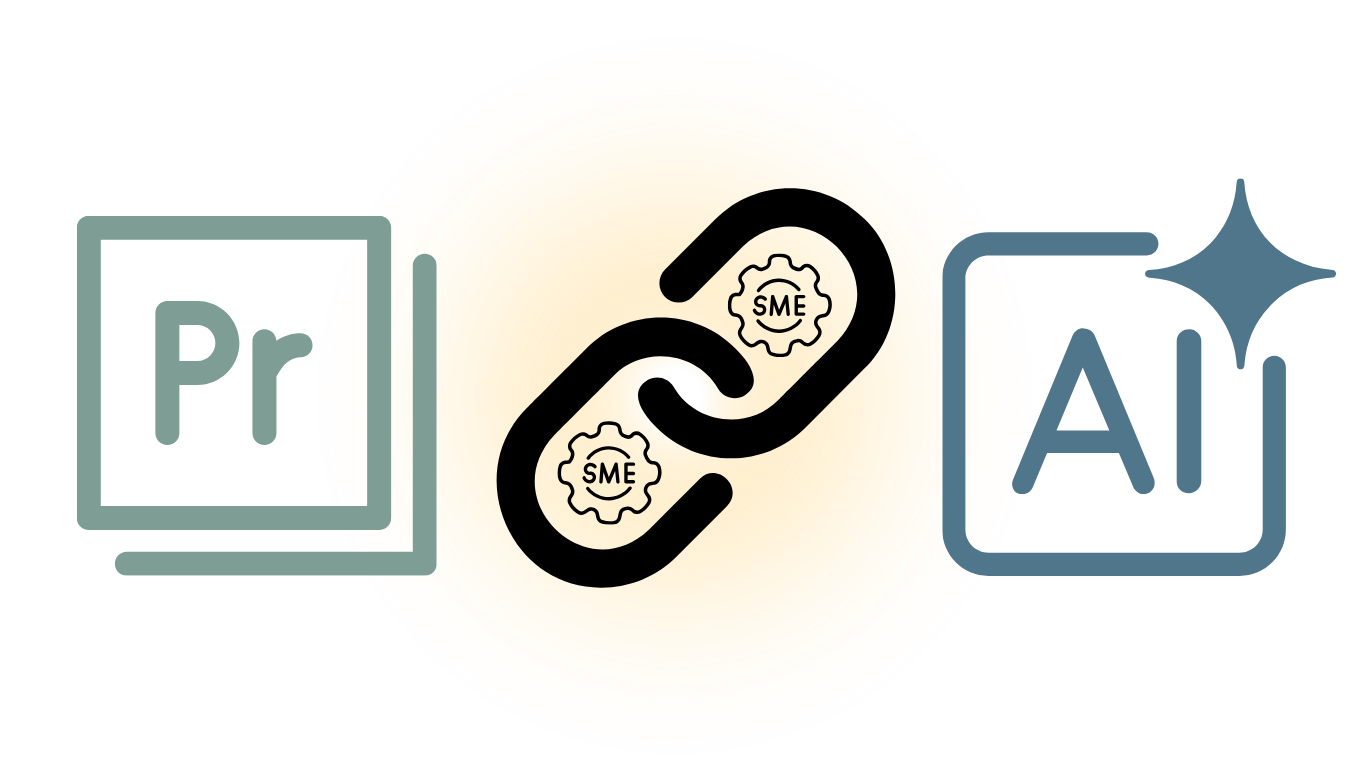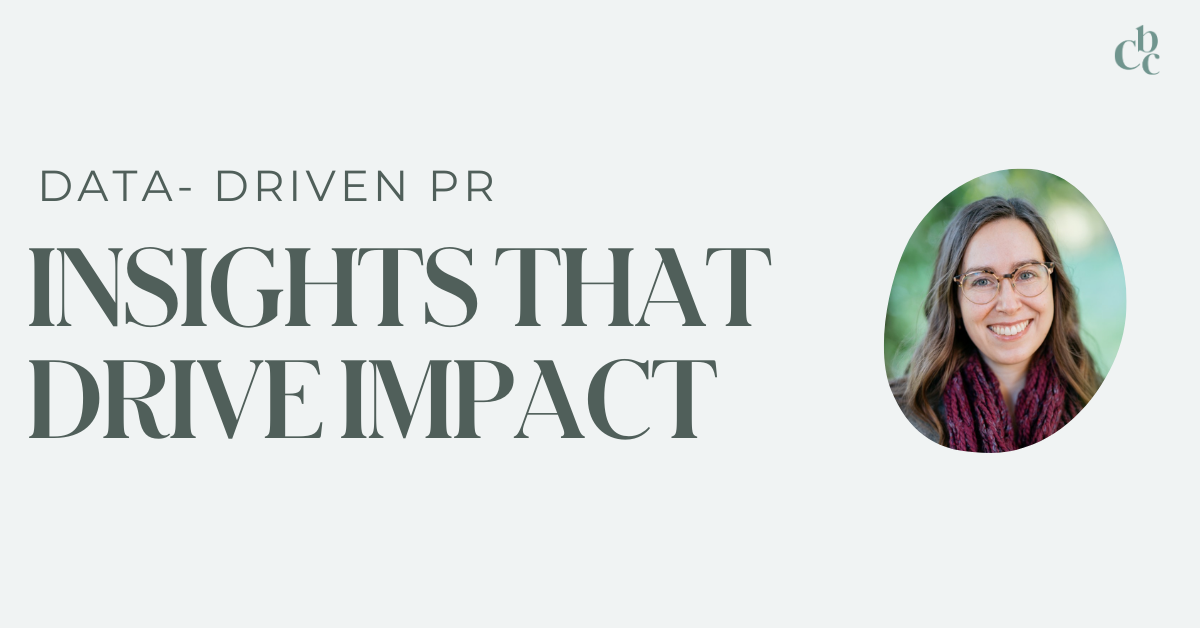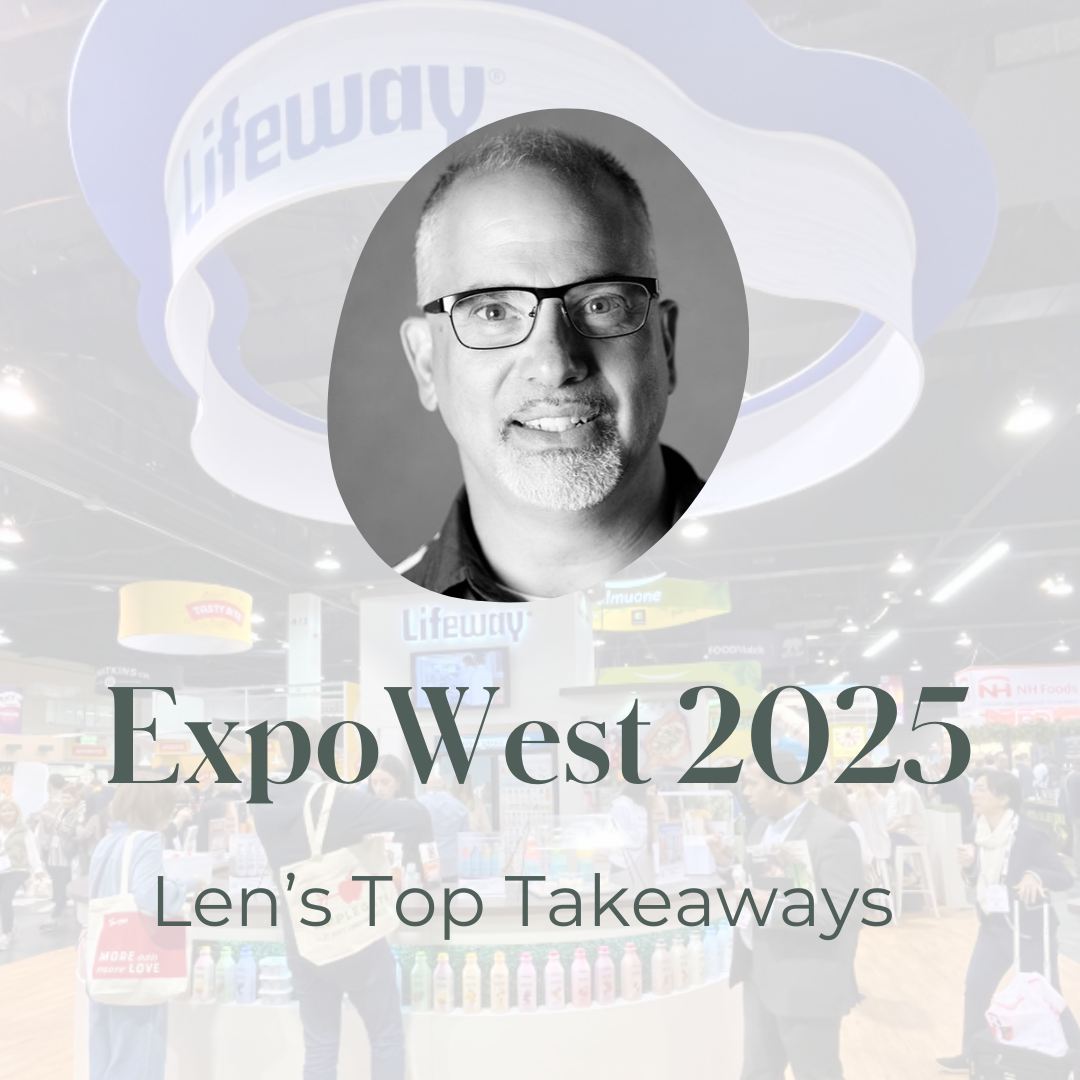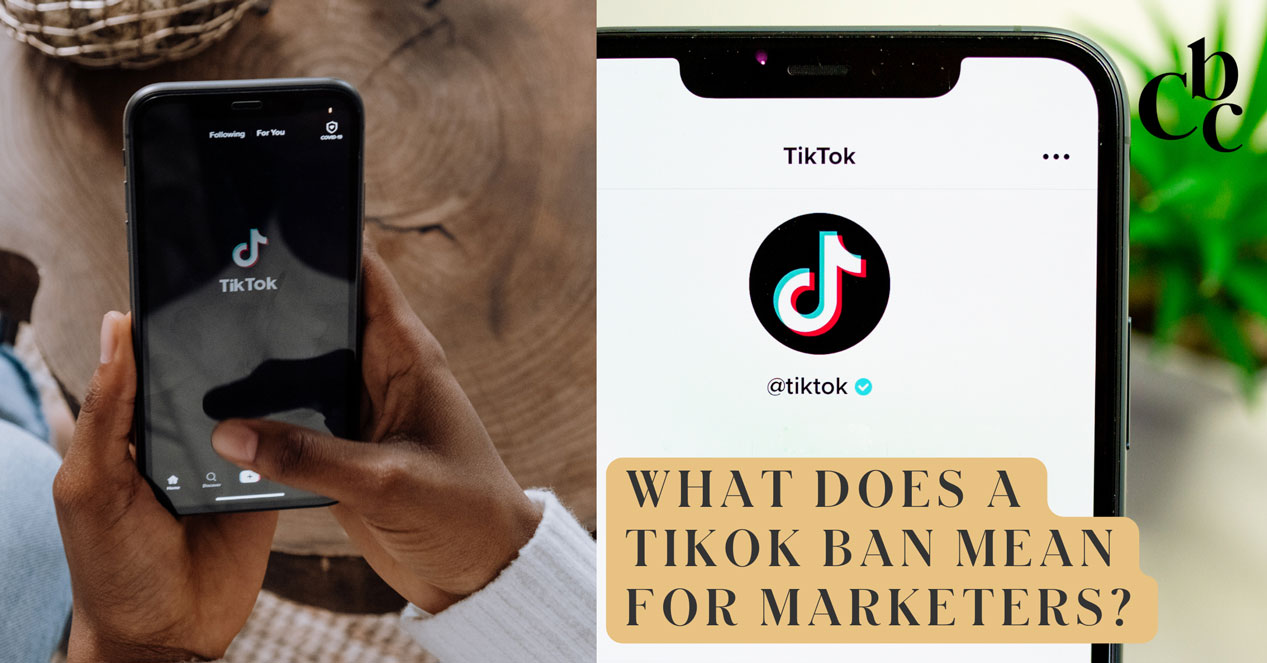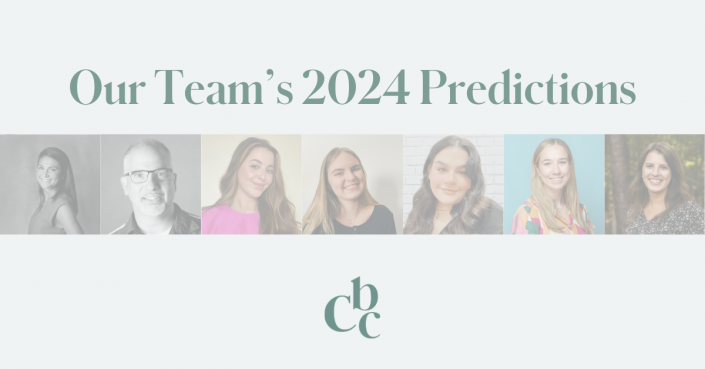Our Top Takeaways from HubSpot INBOUND Conference 2019
If you’ve spent any time in the marketing world, you’ve probably heard of Boston-based marketing automation company HubSpot and their flagship conference, INBOUND. With one of the biggest marketing conferences happening in our backyard, we couldn’t pass up the opportunity to send our Digital & Content team to this year’s INBOUND 2019.
From September 3-6, we joined 26,000 fellow marketing nerds at the Boston Convention & Exhibition Center for four whirlwind days of inspiring speakers and educational workshops. We’re still coming down from that post-conference high, but to keep the learning going, we’re sharing our top takeaways from INBOUND 2019 in this blog post series.
In this first post, Megan Rothe, Account Executive on the Digital & Content team and second-time INBOUND attendee, shares her highlights from the conference.
Another INBOUND in the Books
Since this was my second time attending HubSpot’s INBOUND, I knew to expect the jam-packed days and giant expo hall swarming with marketers. But each year comes with new surprises (like Club Inbound’s made-for-Instagram feather boa backdrop) and new learnings to take back to the office. From data analysis to content strategy, I came away with lots of tips and tricks that I’m excited to implement at CBC. Read on for my biggest takeaways!

Your Priorities Are Sacred — Protect Them
“What are you willing to give up to have the life you keep pretending to want?”
Elizabeth Gilbert, best-selling author of Eat, Pray, Love and Big Magic: Creative Living Beyond Fear, posed this question at the beginning of her keynote on living a creatively-driven life. It’s a great reminder that in order to achieve the goals that we set for ourselves, our priorities need to align.
Once we decide what is really important to us, we then have to set boundaries to protect those priorities. Our time and energy are limited, so it’s not just about saying no to the things we don’t want to do. We also have to say no to some things we do want to do.
This is great life advice for any modern-day professional who is trying to balance way too many things at once (guilty as charged). But it’s also helpful guidance for marketers.
Ask yourself: what are your top marketing goals for this quarter or this year? Now, what strategies and tactics are you using to achieve those goals?
With limited time and resources, you can’t do everything. You have to prioritize the efforts that will get you closer to your goals. And you also have to know when to say no to the things that won’t move the needle on your most important goals, no matter how great the idea seems.
Building a Content Playground
In the breakout workshop on “Beyond the Editorial Calendar: New Rules of Content Strategy,” Ashley Faus, Senior Manager of Integrated Media at Atlassian, proposed a new model for the buyer’s journey.
At last year’s INBOUND conference, HubSpot CEO Brian Halligan declared the classic marketing funnel dead. The linear journey from awareness to consideration to decision just doesn’t line up with how people buy today. Halligan’s flywheel is one model that better represents how a business grows.
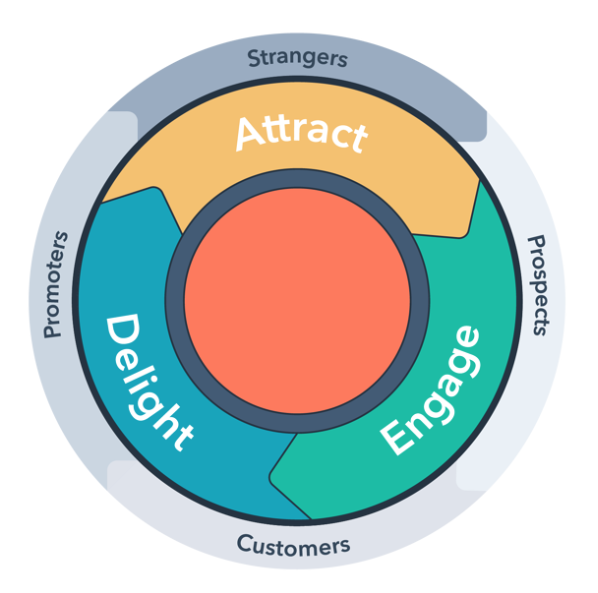
In the context of content marketing, Faus proposes the playground model. Just like there’s no right or wrong way to play on a playground, there’s no right or wrong way for someone to engage with your content. People enter the buyer’s journey at all different stages and consume content in whatever order they wish.
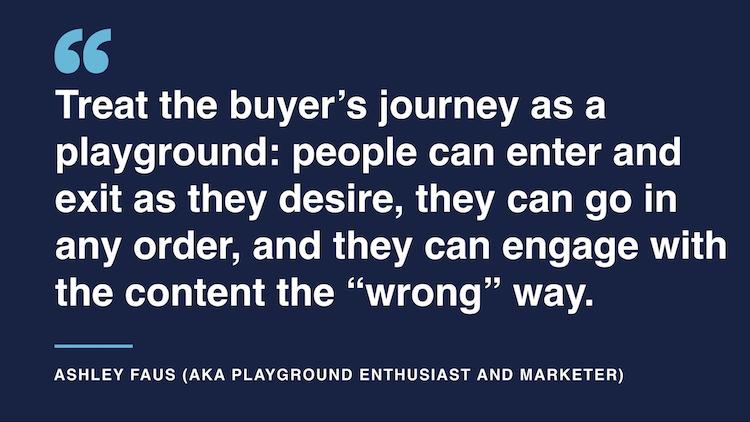
As marketers, we have to move beyond the tired old framework of creating content for the linear stages of a funnel. Instead, our focus should be on delighting our audience through high-quality content that can provide value no matter where they are in their journey. Rather than trying to push leads through the stages of a funnel, content’s goal should be to build a relationship with your audience.
It’s not about getting leads to convert as soon as possible — it’s about keeping them in the research journey for as long as it takes to educate them and to build long-term affinity for your brand. So think about how you can get more mileage out of your content by linking related pieces, re-publishing on new platforms, and leveraging social media for distribution.
Transforming a Deluge of Data Into Actionable Insights
Next up on my INBOUND 2019 agenda was the workshop “Bring Structure and Meaning to Numbers,” presented by Keith Moehring, VP of Strategic Growth at PR 20/20. As marketers, we have access to staggering amounts of data. It’s great that we have access to this data, but how do you cut through the noise to get actionable insights?
Step one is to capture the right data. When you define your KPIs, make sure they are valuable and relevant to your audience. Are you reporting to different audiences? Think about what each one cares about, whether it’s profit, revenue, leads, or something else.
If you’re a marketer, you know how to tell a compelling story, so don’t forget that your analytics reports need a narrative, too. Guide your audience through the entire path of where you’ve been and where you’re going. Baseline data from previous reporting periods and the goals that you’re working toward both provide valuable context to your data.
Once you’ve narrated what happened, it’s time to uncover the insights from the data. The “Five Whys” method, originally developed by Toyota for problem-solving training, is one useful framework for helping you dig deeper into your data.

Don’t stop at a surface-level explanation for why something performed well (or less than well). Keep asking “why?” until you reach a meaningful, actionable insight. For example, if website traffic was up due to a specific blog post, figure out what made that particular content shine. This type of insight will help you create testable hypotheses to either replicate your success or improve your performance the next time around.
Getting People to Care About Your Email Newsletter
After a long day of running back and forth across the Boston Convention Center, I capped off my INBOUND 2019 experience with “How to Write Newsletters People Actually Want to Read” by Margo Aaron, founder of That Seems Important. (Check out her website. It’s amazing). At the heart of this workshop was the question: How do you get people to care?
Marketing is about connecting with people, meeting them where they’re at, and matching their problems to your solutions. If you get to know your audience — and I mean really get to know them, from their goals to what keeps them up at night — you will understand why they might care about your email.
We’ve all experienced inbox overload. You don’t read every email you get, and neither do the people on your mailing list. So if you want people to actually read your email, you need to make sure that the content, writing style, and format resonate with your specific audience.
One way to do this is to write with a clear and consistent voice, tailored to your audience. Everything should feel like an inside joke, whether you’re using in-group language or making pop culture references that you know your readers will get. Sure, you will exclude some people who don’t “get it,” but your target audience will feel like you truly understand them.
It’s Not Over Til It’s Over
There were so many great sessions at the INBOUND conference, but we can’t cover them all in one post. Stay tuned for more posts on what the rest of the CBC team learned at INBOUND 2019. From brand storytelling to how to market to Generation Z, we have many more marketing insights to share.
Want to know when our new blog posts are released? Sign up for our newsletter to stay up to date on the latest marketing trends and insights.

